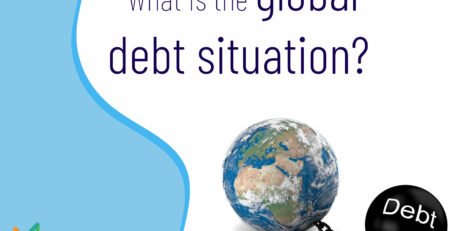How to Invest ₹30 Lakhs After Retirement: Best Low-Risk Options for Steady Income
1. Introduction
Retirement marks a new phase of life where financial security becomes the top priority. If you have ₹30 lakhs to invest, choosing the right low-risk options is crucial to ensure a steady income while protecting your capital.
This guide covers:
✅ Best low-risk investment options for retirees
✅ Expected monthly/yearly returns from ₹30 lakhs
✅ Tax implications on retirement income
✅ Balanced portfolio strategies for safety and growth
2. Key Principles for Investing After Retirement
A. Safety First
- Avoid high-risk investments (stocks, crypto).
- Prioritize capital preservation.
B. Regular Income
Choose options that provide monthly/quarterly payouts.
C. Liquidity
Keep some funds easily accessible for emergencies.
D. Tax Efficiency
Opt for tax-saving instruments (SCSS, PPF).
3. Best Low-Risk Investment Options for ₹30 Lakhs
1. Senior Citizen Savings Scheme (SCSS) – Best Guaranteed Return
- Interest Rate: 8.2% (Q2 2024)
- Max Investment: ₹30 lakhs (across multiple accounts)
- Tenure: 5 years (extendable once for 3 more years)
- Monthly Income: ~₹20,500 (₹2.46 lakh/year)
- Tax Benefit: Up to ₹1.5 lakh under Section 80C
- Risk Level: Zero (Govt. Backed)
2. Fixed Deposits (FDs) – Flexible & Safe
| Type | Interest Rate | Monthly Income (₹30L) |
|---|---|---|
| Bank FDs | 7.0% – 7.5%* | ₹17,500 – ₹18,750 |
| Post Office FD | 7.5% (5-Yr)* | ₹18,750 |
| Corporate FDs | 8.0% – 8.5%* | ₹20,000 – ₹21,250 |
✔ Pros: Guaranteed returns, flexible tenures.
❌ Cons: Interest taxable as per slab.
3. Pradhan Mantri Vaya Vandana Yojana (PMVVY) – Pension Plan
- Returns: 7.4% p.a. (monthly pension)*
- Max Investment: ₹15 lakh (₹30L via spouse)
- Tenure: 10 years
- Monthly Pension: ~₹9,250 (₹1.11 lakh/year)
- Risk Level: Low (LIC-Backed)
4. Debt Mutual Funds – Better Than FDs?
- Expected Returns: 6.5% – 8%*
- Best Funds:
- ICICI Prudential Corporate Bond Fund
- HDFC Short-Term Debt Fund
- Taxation:
- Short-Term (<3Yrs): As per slab
- Long-Term (>3Yrs): 20% with indexation
✔ Pros: Higher liquidity, better post-tax returns than FDs.
❌ Cons: Slight market risk.
5. RBI Bonds (7.75%* Interest) – Tax-Free Option
- Interest Rate: 7.75%* (Tax-Free)
- Max Investment: No limit
- Tenure: 7 years (lock-in)
- Yearly Income: ₹2.32 lakh (₹19,375/month)
- Risk Level: Zero (RBI Backed)
6. Hybrid Funds (Conservative) – Balanced Growth
- Equity-Debt Mix: 20% Equity + 80% Debt
- Expected Returns: 7%* – 9%*
- Best Funds:
- HDFC Hybrid Debt Fund
- SBI Conservative Hybrid Fund
- Risk Level: Low to Moderate
4. Sample ₹30 Lakh Retirement Portfolio
| Investment | Amount (₹) | Monthly Income | Risk |
|---|---|---|---|
| SCSS | 15,00,000 | ₹10,250 | Zero |
| Bank FDs | 10,00,000 | ₹6,250 | Low |
| Debt Mutual Funds | 3,00,000 | ₹1,500 | Low |
| RBI Bonds | 2,00,000 | ₹1,250 | Zero |
| Total | 30,00,000 | ₹19,250 | Low |
5. Tax Implications on Retirement Income
A. Taxable Investments
- FD Interest: Added to income, taxed as per slab.
- Debt Funds (Short-Term): As per slab.
B. Tax-Free/Tax-Saving Options
- SCSS: Interest taxable, but ₹1.5L deduction under 80C.
- RBI Bonds: Tax-free interest.
- PPF: Tax-free returns (but ₹1.5L/year limit).
6. Common Mistakes to Avoid
❌ Putting all money in FDs (inflation risk).
❌ Ignoring medical emergency funds.
❌ Investing in high-risk stocks for quick returns.
❌ Not diversifying across instruments.
7. Frequently Asked Questions (FAQs)
Q1. Which is safest: SCSS or FD?
✅ Both are safe, but SCSS offers higher interest for seniors.
Q2. Can I withdraw SCSS money early?
⚠️ Yes, but with a penalty (1.5% deduction).
Q3. How much monthly income can I expect from ₹30L?
💰 ₹15,000 – ₹20,000 (depending on investments).
Q4. Are debt funds safer than FDs?
📉 Slightly riskier but offer better post-tax returns.
8. Key Takeaways
✔ SCSS & PMVVY offer the highest safe returns (8%+).
✔ Debt funds provide better liquidity than FDs.
✔ Diversify between FDs, SCSS, and bonds.
✔ Keep 10-15% in liquid funds for emergencies.
✔ Avoid high-risk investments post-retirement.












